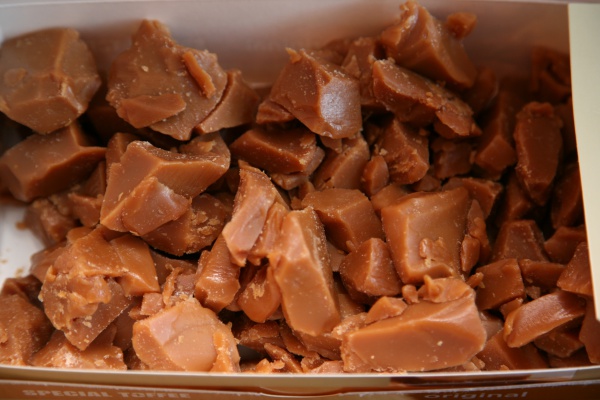Facts About Toffee
Toffee is a delectable confection crafted by caramelizing sugar or molasses with butter, and occasionally a bit of flour. The mixture is heated until it reaches the hard crack stage, giving it that delightful crunch. Sometimes, nuts or raisins are added for extra flavor. This process involves boiling the ingredients until they can be shaped and acquire a glossy finish. Once ready, the toffee is poured into a tray to cool and solidify into a slab. Depending on the recipe and cooking temperature, the texture of toffee can vary significantly. The caramelization imparts toffee with its characteristic brown color and a smoky, rich taste.
In the United States, English toffee is a cherished variation. It is typically buttery and made with almonds, available in both chewy and hard forms. Heath bars, for instance, feature a core of English toffee. Another interesting type is honeycomb toffee, which is light and filled with bubbles created by adding baking soda and vinegar to the mixture. Then there's the classic toffee apple—a crisp apple coated in hard toffee on a stick, a favorite at fairs and fall festivals. Toffee can also be flavored with ingredients like rum, chocolate, vanilla, raisin, raspberry, and honeycomb, providing a range of delicious options.
As for the word "toffee" its origins are somewhat mysterious. Some believe it stems from the Creole language, referring to a mixture of sugar and molasses. The Oxford English Dictionary notes that the term first appeared in print in 1825 and suggests it's a variation of "taffy" both of which were originally English dialect words.

 United States
United States